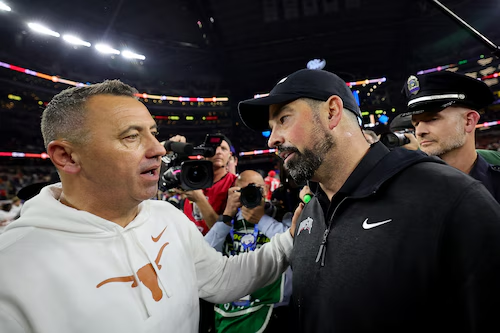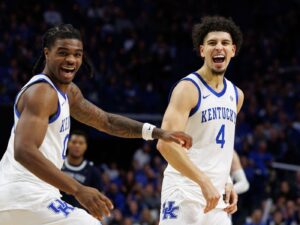
How much is Ohio State football paying for a 2025 schedule featuring Texas, Grambling and Ohio?
Ohio State University’s 2025 football schedule features a compelling lineup of non-conference opponents: Texas, Grambling State, and Ohio. These matchups not only promise exciting football but also involve significant financial considerations. In this article, we will delve into the costs associated with these games, the rationale behind scheduling such opponents, and the broader implications for Ohio State’s athletic program.
The 2025 Non-Conference Schedule
Ohio State’s 2025 non-conference football schedule includes three home games:
- August 30: Texas Longhorns
- September 6: Grambling State Tigers
- September 13: Ohio Bobcats
These games are strategically placed to provide a mix of challenges and opportunities for the Buckeyes. The season opener against Texas is particularly noteworthy, as it marks the first meeting between the two programs since 2005. The game against Grambling State is historic, being the first-ever matchup between Ohio State and the Tigers, and the first time Grambling State faces a Big Ten opponent. The Ohio game renews an in-state rivalry, adding local interest to the schedule.
Financial Commitments to Non-Conference Opponents
Scheduling high-profile non-conference games often involves significant financial arrangements. These payments, known as “guarantee games,” are common in college football and serve multiple purposes:
- Revenue Generation: The visiting team receives a substantial payment, which can be a significant source of revenue for smaller programs.
- Exposure: Playing against a prestigious program provides the visiting team with national exposure, which can enhance their recruiting efforts and overall visibility.
- Scheduling Flexibility: For the host team, these games offer flexibility in scheduling and the opportunity to build a competitive schedule.
Texas Longhorns
The game against Texas is a marquee matchup that brings national attention. While the specific financial terms of this game have not been publicly disclosed, it’s common for such high-profile games to involve significant financial arrangements. These arrangements benefit both programs by providing a competitive challenge and national exposure.
Grambling State Tigers
The game against Grambling State is particularly notable due to the substantial guarantee provided to the visiting team. Grambling State is set to receive a $1 million payout for the game. This amount is significant for an FCS program and reflects the value Ohio State places on the matchup. The game also serves to showcase the cultural and athletic excellence of both institutions.
Ohio Bobcats
The game against the Ohio Bobcats is a renewal of an in-state rivalry. While the specific financial terms of this game have not been publicly disclosed, it’s typical for such matchups to involve smaller guarantee payments compared to games against Power Five opponents. These games are valuable for regional engagement and maintaining local rivalries.
Financial Implications for Ohio State
For a program like Ohio State, which has substantial revenue from television contracts, ticket sales, and merchandise, the financial outlay for non-conference games is a manageable expense. However, these payments are part of a broader financial strategy that includes:
- Revenue Maximization: Hosting high-profile games can lead to increased ticket sales, merchandise revenue, and concessions.
- Brand Enhancement: Playing against prestigious programs enhances Ohio State’s national profile and recruiting appeal.
- Community Engagement: In-state matchups foster community support and local engagement.
While the payments to non-conference opponents are significant, they are a strategic investment in the program’s long-term success and visibility.
Broader Implications for College Football
The financial arrangements for non-conference games have broader implications for college football:
- Competitive Balance: Guarantee games can create disparities between programs, with smaller schools relying on these payments for financial stability.
- Scheduling Dynamics: The need for financial compensation can influence scheduling decisions, with larger programs seeking to balance competitive challenges with financial considerations.
- Revenue Distribution: The distribution of revenue from guarantee games can impact the financial health of athletic programs, particularly those in the Group of Five and FCS.
These dynamics are part of the ongoing evolution of college football, where financial considerations play an increasingly prominent role in shaping the sport.
Conclusion
Ohio State’s 2025 football schedule reflects a strategic approach to non-conference play, balancing competitive challenges with financial considerations. The payments to opponents like Grambling State are part of a broader strategy to enhance the program’s national profile, engage with local communities, and ensure financial sustainability. As college football continues to evolve, these financial arrangements will play a crucial role in shaping the future of the sport.





